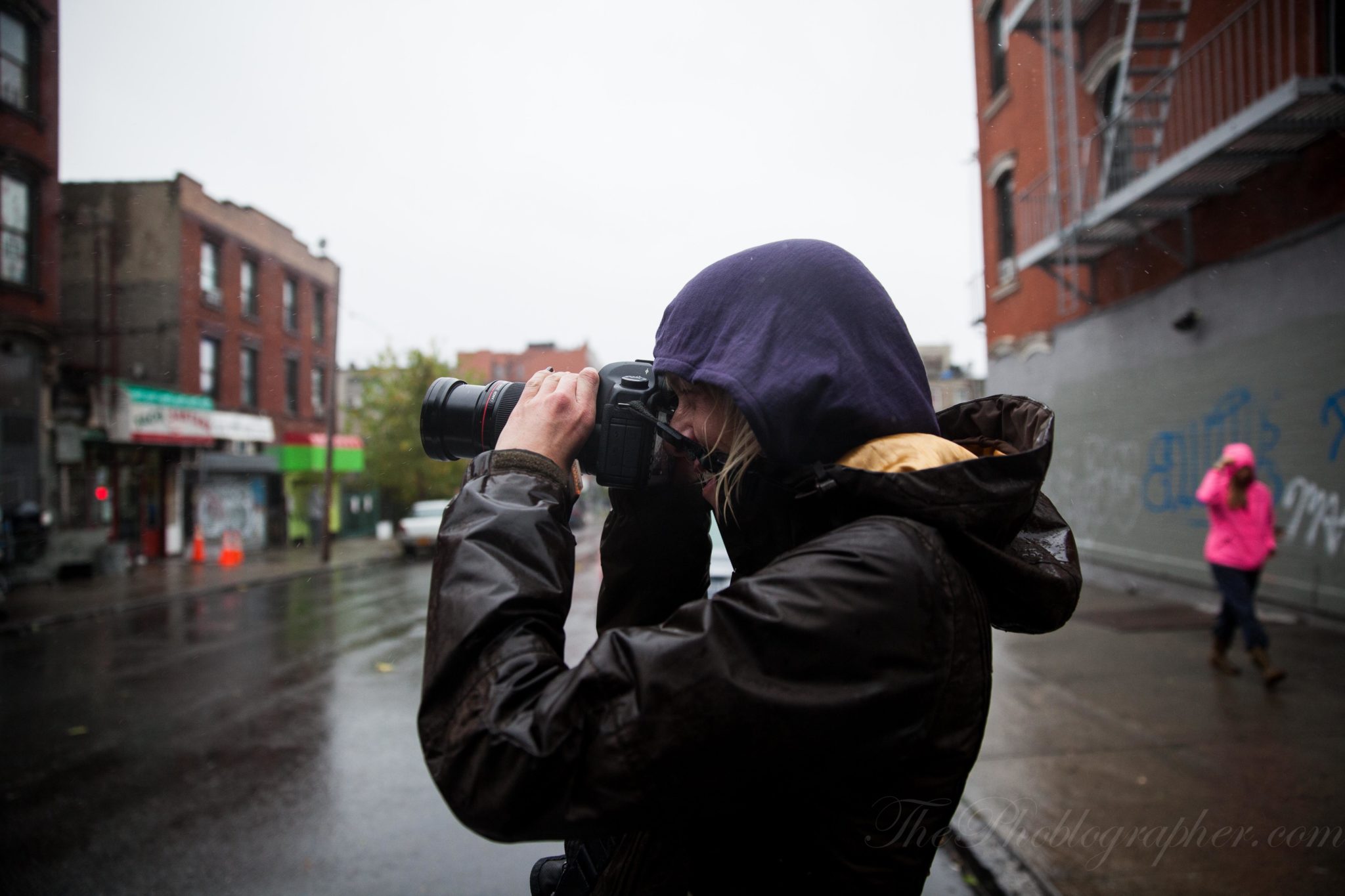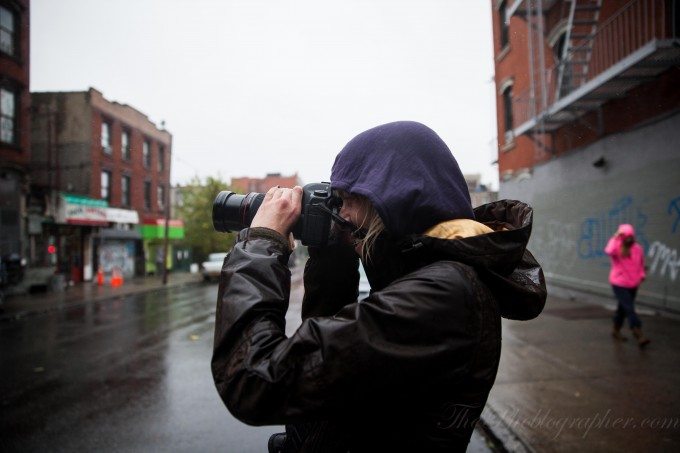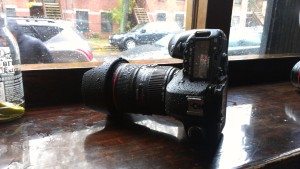After seeing the Dust Donut kickstarter project not long ago, we started to really wonder about everything that goes into weather sealing a lens. During the review period, I took the Canon 24-70mm f2.8 L USM II out into Hurricane Sandy–which the company claims is weather sealed. Indeed, it stood up to the elements quite well. But to really find out just what keeps our lenses protected, we decided to talk to a couple of engineers from a couple of camera companies.
The answers are actually much more simple than we thought.
Now, not every single consumer needs a weather sealed lens–but they are very nice to have for the professional market and for those that often shoot in remote areas that have tougher climates. Back in the fully analog film days, Ansel Adams would take large glass slides coated in photographic material into the Arctic to photograph the landscapes there. Those were another set of problems that were faced though: especially transporting all that glass and ensuring that the snow would stay out of his camera bellows.
In modern technology, nearly every camera and lens has electronics built into them. Electronic devices have never always worked very well out in the rain or in other situations (like snow or even the deserts.)
To protect their customers’ investments, companies started to offer cameras and lenses that were protected from the elements.
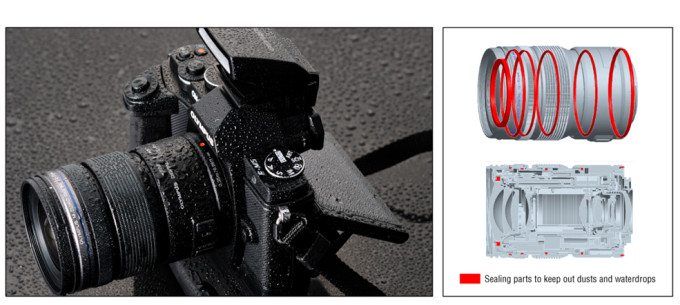
Lenses become weather sealed in the factory; and this feature is incorporated into the overall design of the lens. As you can see in the diagram above, it is much different than something like the Dust Donut–which instead just puts the seal between the camera and the lens. These seals are often made of rubber, and they are placed in spots where the shooting situation can become compromised in tough weather.
“Our Dust and Splash Proof designed lenses incorporate numerous seals at all points where water or dust intrusion could occur, such as at the zoom and focus rings and lens barrel,” says Richard S. Pelkowski, Manager of Technical Product at Olympus Imaging America. Note that this formula for weather sealing appears to be present in not only the Micro Four Thirds lenses which the company is much more famous for, but also in the company’s Super High Grade lenses–which were for the Four Thirds DSLR mount.
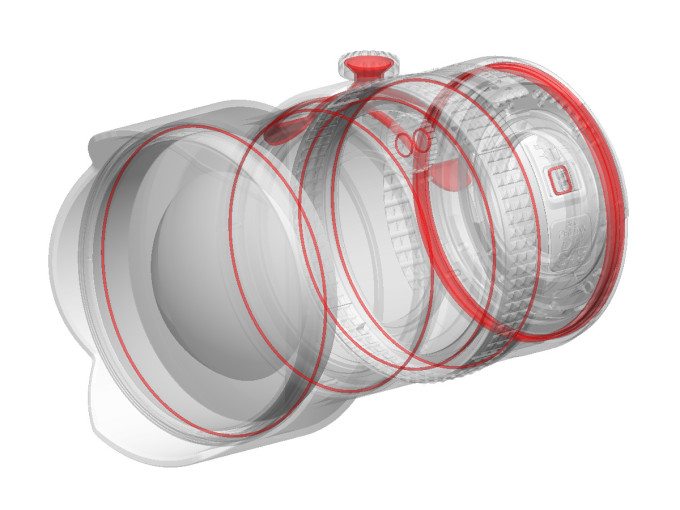
Pentax, whose K-30 and 16-50mm f2.8 we ran under a faucet for a period of time, seems to take a similar approach. John Carlson, Sr. Marketing Manager for Pentax tells us, “Our weather sealed lenses contain a silicon rubber material which is inserted in between each externally exposed part to ensure it is properly sealed against moisture and dust.”
As we know though, all lenses have moving part: such as a focusing switch, focusing barrels, zoom rings, etc. Because prime lenses often have less moving rings and parts than zoom lenses, it can be very safe to assume that it is easier to protect a prime lens from the elements than a zoom lens. These areas are some of the most prone to abuse not only by photographers, but also by Mother Nature’s very un-motherly touch.
Chuck Westfall, Advisor for Technical Information at Canon USA states that, “Canon EF lenses that have been enhanced with countermeasures for dust and water resistance are typically equipped with rubber gaskets and seals at key points. These key points typically include:
– A rubber ring gasket on the lens mount blocks the gap between the lens and the camera
– The moving parts of the manual focus, zoom, and playback rings (where applicable) are shaped to be dust-proof and drip-proof. Zoom lenses with extending barrels such as Canon’s EF24-70mm f/2.8L USM, EF 24-70mm f/2.8L II USM, EF 24-105mm f/4L IS USM, EF 70-300mm f/4-5.6L IS USM, etc., feature dust-proof and drip-proof protection around the zooming extension.
Image pulled from Chris Gampat’s Instagram
– AF Stop and Focus Preset buttons feature dust-proof and drip-proof construction
– Dust-proof and drip-proof rubber material is installed on the connections of the switch panels and other external parts.
– With super-telephoto lenses, gaskets and seals around the front element of the lens and the opening where the rear drop-in filter holder is inserted.
This doesn’t only apply to Canon though, other companies seem to adhere to this method. “The seals that involve moving parts are constructed from a more elastic material than that used for fixed parts.” says Carlson. “By using a different material we can ensure it operates smoothly while maintaining its seal from dust and moisture.”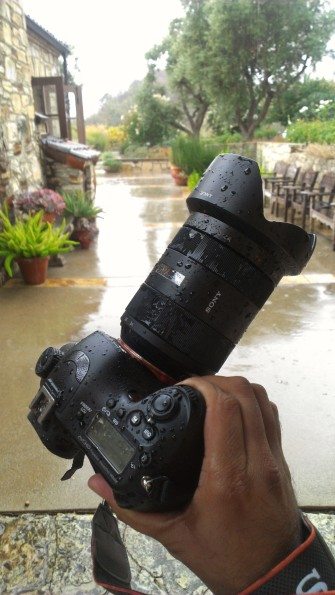
Pentax and Olympus lenses are both designed in a different way from the rest of the industry. If you go to a camera store, a salesman might try to tell you that the weather sealing for your lens won’t be complete without a UV filter or protective filter of some sort. “I like to suggest lens coats myself,” states Chuck Capriola, Director of Live Chat at B&H Photo Video Pro Audio in NYC.
Typically, this statement has long been known to apply to Canon and Nikon lenses. These two companies in particular have a different philosophy when it comes to weather sealing. But what many people don’t know is that this factor only applies to certain lenses, “EF super-telephoto lenses typically do not require a user-installed filter to maintain weather resistance because they have a gasket at the front element,” says Westfall. “But EF lenses that accept front mounted filters typically do not have gaskets behind the filter mount. Therefore, we strongly recommend using one for maximum weather resistance when desired.”
During the interview process for this article, we tried contact Nikon and Sony–however both companies refused to comment on their weather sealing.
Both Olympus and Pentax stated in documented interviews that their lenses don’t need UV filters. But what if you want to protect the front element? Mr. Pelkowski states that, “As filter threads are of a fine pitch or dimension, as long as the filter is screwed on completely to the lens barrel, the filter would prevent any water or dust from fouling the forward most element of the camera’s lens. And of course, the filter should never be over tightened as it could become very difficult to remove.”
He continued to state that the Dust and Splash Proof integrity of the lens is not dependent on having a UV or any other type of filter installed on the lens.
Here are Some Weather Sealed Lenses
Please Support The Phoblographer
We love to bring you guys the latest and greatest news and gear related stuff. However, we can’t keep doing that unless we have your continued support. If you would like to purchase any of the items mentioned, please do so by clicking our links first and then purchasing the items as we then get a small portion of the sale to help run the website.


